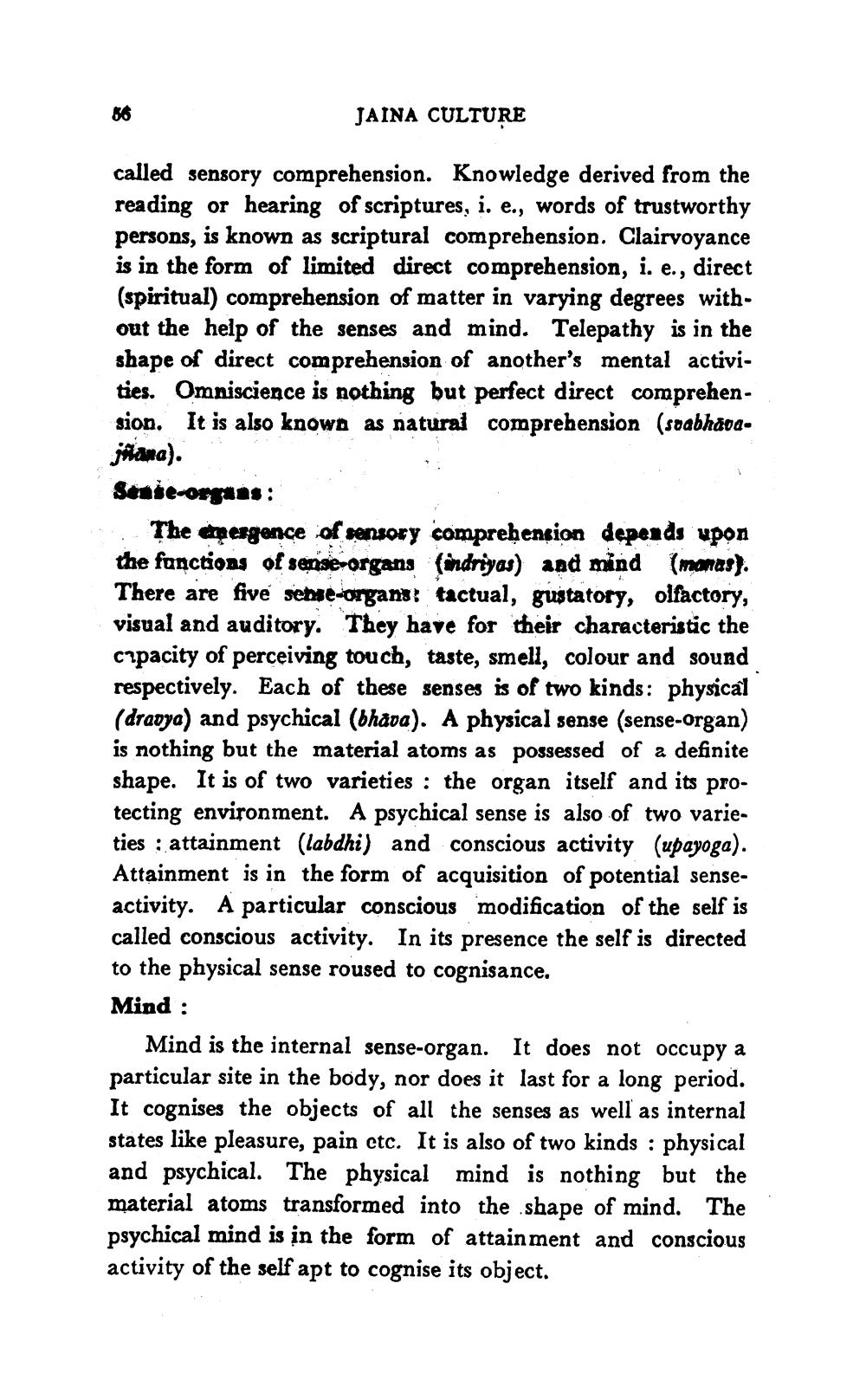________________
56
JAINA CULTURE
called sensory comprehension. Knowledge derived from the reading or hearing of scriptures, i. e., words of trustworthy persons, is known as scriptural comprehension. Clairvoyance is in the form of limited direct comprehension, i. e., direct (spiritual) comprehension of matter in varying degrees without the help of the senses and mind. Telepathy is in the shape of direct comprehension of another's mental activities. Omniscience is nothing but perfect direct comprehension. It is also known as natural comprehension (svabhavajñana).
Sense-organs:
The emergence of sensory comprehension depends upon the functions of sense-organs (indriyas) and mind (manas). There are five sense-organs: tactual, gustatory, olfactory, visual and auditory. They have for their characteristic the capacity of perceiving touch, taste, smell, colour and sound respectively. Each of these senses is of two kinds: physical (dravya) and psychical (bhava). A physical sense (sense-organ) is nothing but the material atoms as possessed of a definite shape. It is of two varieties: the organ itself and its protecting environment. A psychical sense is also of two varieties attainment (labdhi) and conscious activity (upayoga). Attainment is in the form of acquisition of potential senseactivity. A particular conscious modification of the self is called conscious activity. In its presence the self is directed to the physical sense roused to cognisance.
:
Mind:
Mind is the internal sense-organ. It does not occupy a particular site in the body, nor does it last for a long period. It cognises the objects of all the senses as well as internal states like pleasure, pain etc. It is also of two kinds : physical and psychical. The physical mind is nothing but the material atoms transformed into the shape of mind. The psychical mind is in the form of attainment and conscious activity of the self apt to cognise its object.




